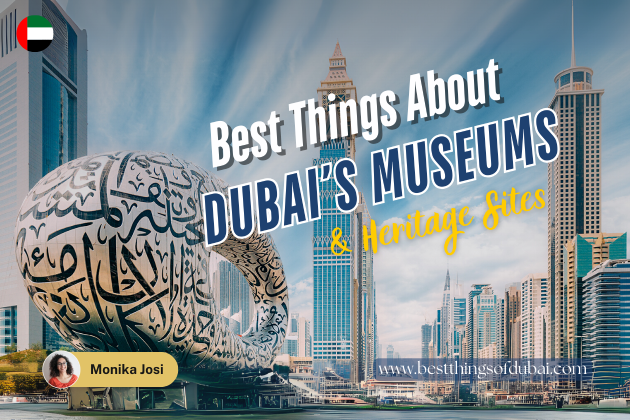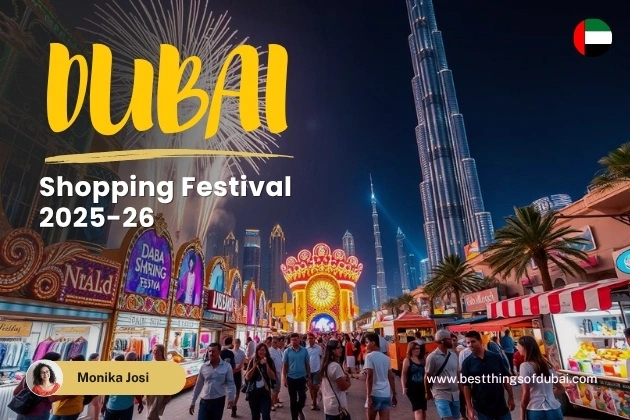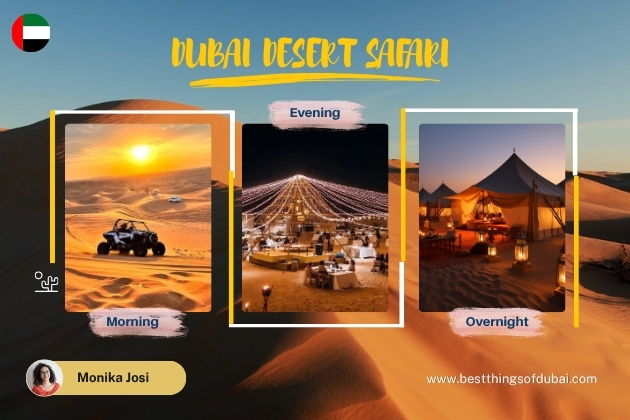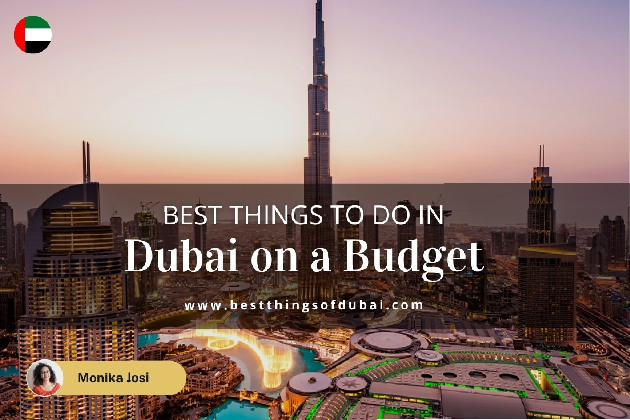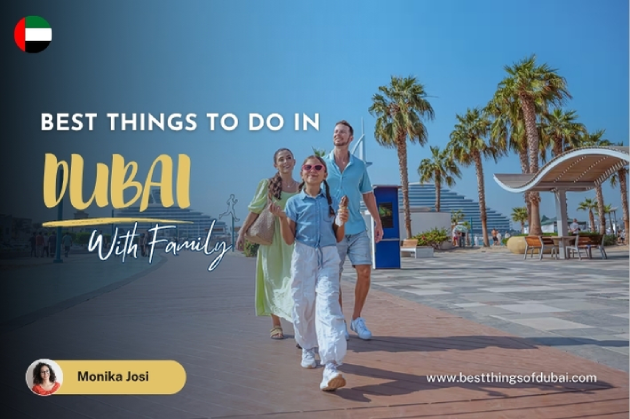Dubai may be best known for its futuristic skyline, luxurious shopping malls, and thrilling desert adventures. But behind all the glitz and glamour lies a fascinating cultural heritage that tells the story of its transformation from a quiet fishing village to a global city. If you’re curious to explore beyond skyscrapers and shopping sprees, Dubai’s museums and heritage sites are the perfect places to connect with the city’s roots.
If you’re planning a trip and want to look beyond modern attractions like the Best Things to Experience at Burj Khalifa, diving into Dubai’s cultural gems will give you a richer, more authentic experience.
Let’s explore the highlights, travel tips, and best things about Dubai’s museums and heritage sites that make Dubai unforgettable.
Why Visit Museums and Heritage Sites in Dubai?
Visiting Dubai’s heritage sites is like stepping into a time machine. While modern Dubai dazzles with its innovation, its history is equally captivating. The museums and cultural landmarks offer:
- Insight into Emirati traditions – from pearl diving to desert living.
- Architectural wonders that reflect both old-world charm and Islamic design.
- Family-friendly attractions where children and adults can learn together.
- Immersive experiences that go beyond exhibits, with workshops, performances, and guided tours.
Whether you’re a history buff, a culture enthusiast, or just a curious traveler, exploring these places adds depth to your Dubai holiday.
Top Museums in Dubai You Shouldn’t Miss
1. Etihad Museum
For a deep dive into modern UAE history, the Etihad Museum is unbeatable. This strikingly designed museum tells the story of the country’s founding in 1971. Through interactive exhibits, photos, and films, visitors can explore the journey of unification.
Best Thing About It: The unique structure resembles a manuscript with seven golden pens representing the emirates signing the union agreement.
Travel Tip: Allocate at least two hours here to fully explore the interactive exhibits. Guided tours are highly recommended.
2. Museum of the Future
While not a heritage site in the traditional sense, the Museum of the Future is one of Dubai’s most remarkable museums. It showcases futuristic innovations in space, AI, robotics, and sustainability while reflecting the city’s vision.
Best Thing About It: The building itself is an architectural marvel – a torus-shaped structure with Arabic calligraphy cut-outs glowing at night.
Travel Tip: Book tickets online well in advance, as this museum is among Dubai’s most popular attractions.
3. Coffee Museum
Located in the Al Fahidi Historical District, the Coffee Museum is a hidden gem. It celebrates the centuries-old coffee culture of the Middle East with displays of coffee-making tools, roasting techniques, and tasting sessions.
Best Thing About It: You can enjoy authentic Arabic coffee while learning how the drink shaped trade and hospitality in the region.
Travel Tip: Pair this visit with a stroll through the district’s art galleries and cultural centers.
4. Pearl Museum
Dubai’s economy was once powered by pearl diving, and the Pearl Museum inside the Emirates NBD building beautifully preserves this legacy. It displays some of the rarest natural pearls and tells stories of the divers who risked their lives in the Gulf waters.
Best Thing About It: The collection of natural pearls is unmatched, offering a glimpse into Dubai’s pre-oil economy.
Travel Tip: Visits are by appointment, so make sure to book in advance.
Must-Visit Heritage Sites in Dubai
1. Al Fahidi Historical District (Al Bastakiya)
Walking through Al Fahidi feels like entering old Dubai. Narrow alleys, wind towers, and sandstone houses transport you back to the 19th century. Today, the district is home to art galleries, cultural exhibitions, and traditional tea houses.
Best Thing About It: The architecture and ambiance perfectly capture Dubai before modernization.
Travel Tip: Don’t miss the Sheikh Mohammed Centre for Cultural Understanding (SMCCU) for authentic Emirati meals and cultural exchange programs.
2. Al Shindagha Museum
Part of the Al Shindagha Historic District, this museum focuses on Dubai’s maritime traditions and family life. Its interactive displays, storytelling, and multimedia installations bring Emirati history alive.
Best Thing About It: The Perfume House, which explores the history of Arabic perfumery, is a highlight.
Travel Tip: Wear comfortable shoes, as the area is spread out with several themed houses to explore.
3. Heritage Village
Built in 1997, the Heritage Village in Al Shindagha is designed to recreate Dubai’s past. Here you’ll see traditional houses, Bedouin tents, workshops, and artisans demonstrating crafts like pottery and weaving.
Best Thing About It: It offers live performances and hands-on experiences, making it perfect for families.
Travel Tip: Plan your visit during cultural festivals when the village comes alive with music, dance, and local food stalls.
4. Hatta Heritage Village
For an excursion outside central Dubai, head to Hatta Heritage Village, located in the Hajar Mountains. This restored mountain village includes stone houses, watchtowers, and a traditional mosque.
Best Thing About It: The scenic mountain backdrop makes it a unique cultural escape from the city.
Travel Tip: Combine your trip with outdoor adventures in Hatta, such as kayaking or hiking.
Unique Local Experiences
Beyond museums and heritage sites, Dubai offers cultural activities that bring history and traditions to life. If you’re interested in the Top Things to Know About Emirati Culture While Visiting Dubai, these experiences will give you authentic insights into local traditions:
- Attend an Emirati cooking class to learn how to prepare dishes like machboos or harees.
- Try a traditional dhow cruise along Dubai Creek, where you can imagine the days of pearl diving and spice trading.
- Join a heritage walking tour led by local guides who share fascinating stories about Old Dubai.
- Visit traditional souks like the Gold Souk and Spice Souk to experience trading culture firsthand.
Each of these activities connects you to the heart of Emirati life, helping you appreciate the values of hospitality, family, and community that remain strong even in modern Dubai.
Travel Tips for Exploring Dubai’s Cultural Side
- Dress modestly when visiting heritage districts and museums to respect local culture.
- Carry cash, as some smaller cultural attractions and cafes may not accept cards.
- Use public transport or abra rides for easy access to Dubai Creek areas.
- Visit in the cooler months (November to March) for comfortable walking tours.
- Check timings – some heritage sites may close earlier than malls or modern attractions.
Final Thoughts
The best thing about Dubai’s museums and heritage sites is how they balance tradition with innovation. From the humble beginnings of pearl divers to the vision of the future, these places allow visitors to appreciate the city’s full journey. Whether you’re strolling through Al Fahidi’s narrow alleys, marveling at pearls, or learning about the UAE’s unification, you’ll leave with a richer understanding of Dubai.
So next time you plan a trip, go beyond the skyscrapers and luxury malls. Dive into Dubai’s cultural heritage – because that’s where the real soul of the city lives.
Are you planning your Dubai itinerary? Don’t miss the chance to explore its cultural gems! From the Dubai Museum to Hatta Heritage Village, each site offers a story worth discovering. Book your Dubai cultural tours today and experience the city like never before.
Have your own adrenaline story to share? I’m always looking to connect with fellow travelers and bloggers. Submit your adventure blog to BestThingsOfDubai.com and let’s inspire others to explore the wild side of Dubai together.
